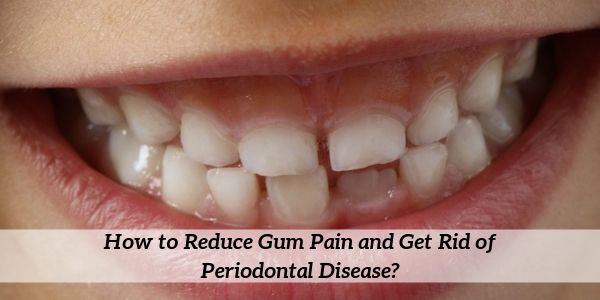Introduction
It is estimated that 90% of people in the UK suffer from some level of gum disease. Gum disease can have serious consequences for both your oral and overall health and wellbeing, so it is important to diagnose and treat your gums early by visiting your Periodontist.
-
What is Periodontics?
Periodontics is a branch of dentistry that focuses on maintaining and treating the structures that support the teeth. A periodontist is a dentist that specialises in the diagnosis, treatment and prevention of gum disease. They are also the dentist you see about placing dental implants and are typically experts in conditions that cause oral inflammation.
-
What are Gum and Periodontal Diseases?
Gum and periodontal diseases are inflammatory conditions of the gums and periodontal tissues, including the underlying bone structure that supports your teeth. If you suffer from gum or periodontal disease you are at an increased risk of developing cavities or even losing your tooth.
These diseases can also have a significant impact on your overall health as periodontal disease has been linked with a high risk of heart disease, stroke, diabetes and respiratory disease.
Periodontal diseases have several causes, primarily poor oral hygiene. Poor or infrequent brushing and flossing allow bacteria to build up. This bacterium forms a clear biofilm of plaque that helps the bacteria to continue to multiply. In response to the bacterial infection, your body releases antibodies that cause inflammation and deterioration of the periodontal tissues leading to gum disease.
Other factors can also increase your risk of developing gum and periodontal diseases.
- Genetics can play a role, and it is believed that up to 30% of the population is predisposed to gum disease.
- Smokers are also at a higher risk of developing gum disease due to the chemical compounds in tobacco smoke and a susceptibility to develop receding gums.
- Misaligned or crowded teeth which make good oral hygiene practises difficult.
- Poor nutrition leading to a weakened immune system and limited cell renewal.
- Hormone fluctuations such as during pregnancy or puberty which can cause inflammation of the gums.
- Some medications cause dry mouth and also cause the gums to recede leading to tooth root exposure.
-
What is Gingivitis?
There are two main periodontal diseases: gingivitis and periodontitis. Gingivitis is an inflammatory gum disease of which there are two types: plaque-induced gingival disease and non-plaque induced gingival disease.
Plaque-induced gingivitis is generally caused by poor oral hygiene or malnutrition which leads to a build-up of bacteria and plaque along the gum line which, if not removed frequently and effectively, can harden and turn into tartar. Tartar irritates the gum tissues causing inflammation.
Some of the symptoms that you may experience with gingivitis include:
- Swollen or tender gums
- Gums that bleed after brushing or flossing
- Bright red or purple-coloured gums
- Bad breath
- Receding gums
While gingivitis is a non-destructive type of gum disease, if left untreated, it can progress to periodontitis which can eventually lead to tooth loss.
-
Available Treatments for Gum and Periodontal Disease
Many treatments are available for gum and periodontal disease, both surgical and non-surgical depending on the severity of your condition.
Non-surgical treatment options include professional dental cleaning to remove tartar that cannot be cleaning with brushing alone. Your dental hygienist in Staines may recommend that you visit more than twice per year for professional cleaning if you have significant tartar build-up.
Scaling and planing are other non-surgical options that may be used. This is a deep cleaning procedure that removes plaque and tartar from below the gum line (scaling), and the root of the tooth is smoothed (planing) to prevent bacteria from recolonising and to give the gum a clean space to reattach to the tooth.
However, if your condition is severe, you may need surgical treatment to help regenerate gum tissue or prevent bone loss. Some surgical procedures to treat gum disease include soft tissue graft to fill in gums that have receded, bone graft to add stability to loose teeth, and flap surgery to remove deep plaque deposits and smooth damaged bone to close the gap between the gum and tooth.
-
Post Treatment Care
Following the care and maintenance plan prescribed by your dentist after treatment is vital to ensure that your gums remain disease-free.
Your at-home care regime may include rinsing your mouth with warm salt water multiple times per day, avoiding certain foods and beverages and a strict oral hygiene routine including brushing and rinsing with a medicated mouthwash. Floss is not always recommended as it can exacerbate gum problems; a better option for cleaning hard to reach places is an interdental brush or Waterpik. You may also be prescribed a course of antibiotics depending on the treatment received.
Your dentist may also recommend professional cleanings up to four times per year to remove tartar and allow the dentist to monitor the condition of your gums.
-
Cost of Treatments
The total cost of gum disease treatment is variable according to the nature and severity of your condition, the type of treatment needed, whether surgical or non-surgical and your post-treatment care regime. To find out the estimated cost for treating gum disease, contact your local Staines Dental Practice.
Banner Image Credit: 98fm.com




